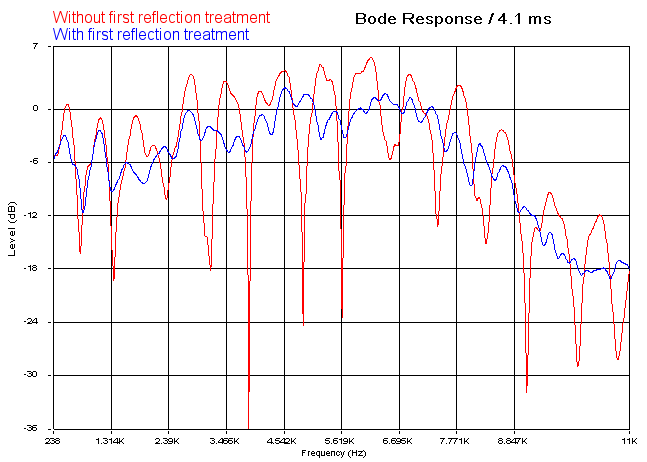>>I haven't yet started the room treatments but like I said before, by carefully locating the speakers and tuning with test tones, I have made a monumental difference in sound quality.
This is a great place to learn, isn't it. It's one of the few places on the internet where I can ask a dumb question and get a careful, helpful answer...
>>I can honestly say that it is now very easy for me, and my wife, to distiquish a good studio recording from a mediocre recording from a reference recording.
It's a little scary at first when you start hearing good vs. bad recordings. "There's something wrong with my system... now it's good... now it's bad... oh, it's the recording"

Going back to the "room shapes" topic for a minute, after catching up on sleep I think I can make a more coherent argument.
As others have said on the thread already, there are limits to how much of a performance can be captured in a stereo recording. In particular, you can't capture 3-dimensional effects (the acoustics of the room where the performance took place) except to the extent that they can be projected onto a single dimension (the axis between the speakers).
You can capture some of the reverb and reflections of a great hall but the most you will get on a stereo recording is a bit of reverb and a small portion of the spaciousness.
Anything else, if you want it, needs to come from the room. Now, a reasonable question pops up -- do you want the same "spaciousness" when listening to a jazz trio that you wanted when listening to Handel's "Messiah" ? The answer is "probably not, but your room doesn't sound *that* big anyways"

Spaciousness and soundstage are different (duh

) and they need different things out of a room. You need a bit of control of first reflections to preserve soundstage (or, presumably, a room which is quite wide relative to the speaker spacing so that your brain can filter out the first reflections) but you also need a bunch of reflection off the side walls to get that ambience and spaciousness.
To be blunt, the recording engineer gives that up when they mix in a dead room, BUT they are probably doing the right thing for the listener. We don't want the recording engineers mixing in awful two-dimensional echoes to do a crappy job of simulating the original venue -- their job is to get the music accurately and tightly represented on the recording to the best extent possible in a two channel environment -- our job is to add the 3-dimensional ambience which you can't get through a 2.0 recording anyways.
The next interesting question is obviously "what about 5.1". The answer is equally obvious -- "I don't know". A 5.1 recording gives you a second dimension -- front to back -- but still doesn't give you the third dimension.
I designed my new house to give me that third dimension. John moved his stereo system into the great room to get that third dimension. We buy QS8s over other surrounds to get that third dimension.
Where do the other speakers go in 10.2 anyways ? Hopefully some of them are above or below the standard 5.1 set...








